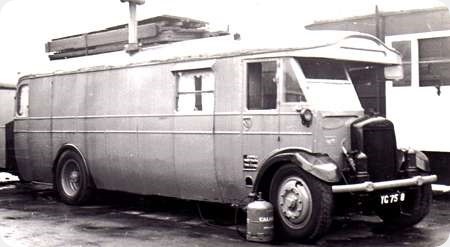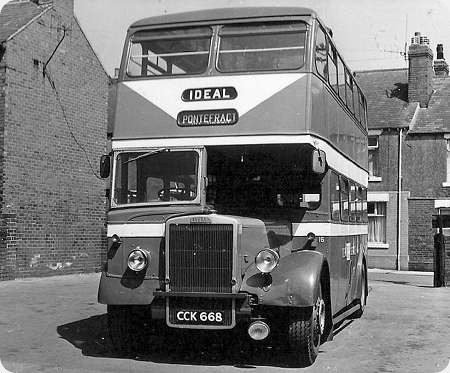Ideal Service – Gilford 168 OT – YG 7518
Ideal Service (R Taylor & Sons)
1934
Gilford 168 OT
??? 32
This superb vehicle was supplied new to R Taylo & Sonsr, t/a Ideal Service, Cudworth, in May 1934. PSVC lists show this to be a Gilford 168 OT, chassis number 12181. It is shown as being a thirtytwo-seater of unknown make. I suspect that the destination aperture and domed peak will be sufficient to lead the OBP sleuths to a simple identification of the coach-builder responsible. This was with showman J Heyes of Norwich by 1950 and moved again in 1958 to WH Smith (non PSV), Salford.
Photograph and Copy contributed by Les Dickinson
05/12/17 – 14:14
Love seeing pictures of old Gilfords. Have connection with them through my grandfather who test drove the chassis when they were built in Bellfield Works, High Wycombe around 1930.
Andrew Stevens
07/12/17 – 08:45
Yes, I recall seeing a few of them when I used to tour the showmen’s vehicles at funfairs. Does someone know how the Gruss springs worked?
Chris Hebbron
08/12/17 – 07:12
About halfway down on the following web page is a description and picture of a Gilford, possibly a 168OT, of Ideal Service, Cudworth, and it is suggested that it might be YG 7518. Clicking on the thumbnail picture gets a slightly bigger view, which shows several differences from the fairground machine, notably the angular front destination indicator and the much lower build of the side panelling. If it is, indeed, the same vehicle, then these modifications might have been undertaken later in the life of the machine to modernise its appearance. //www.svvs.org/help49.shtml
Roger Cox
09/12/17 – 07:35
Roger, in his book ‘Independents in Western Yorkshire’ Neville Mercer writes that both Taylor and Wray had one Gilford each, the Wray one being registered HE 5684. I think the one in your link is more likely to be that of H Wray and it looks shorter than the one above but apparently their seating capacities were the same at 32.
Chris Barker
10/12/17 – 06:22
I am sure that you are right, Chris. The vehicle on the svvs site is clearly different from YG 7518, and must be the Wray example.
Roger Cox
11/12/17 – 06:57
The one registered HE 5684 is shown in PSVC lists as chassis 11668, also a 168OT with 32-seat body of unknown make and delivered new in April 1932 to H.Wray (Ideal)
Les Dickinson
12/12/17 – 08:39
To answer Chris H’s last question, I have no personal knowledge of Gruss air springs, but have found https://www.google.com/patents/US1692035 which is the patent description registered in the USA in 1924. I haven’t had the patience to read through all the print with its OCR errors, but the images give the general idea!
Geoff Pullin
15/12/17 – 07:25
Gruss air springs were auxiliary front suspension units working in concert with standard leaf springs. The travel of the air springs must have occurred at the base of the units, similar to the Hydragas units on my Rover 100 (aka Metro) cars. Looking at this picture of a 1920 Haynes touring car, it shows that the front ends of the leaf springs were attached not directly to the chassis but to the bases of the Gruss units, which were themselves rigidly fixed to the chassis. Whilst acting as a complementary springing medium, the air springs would have also offered a degree of damping action and roll resistance in the days of otherwise unsophisticated suspension systems. www.shorpy.com/node/
Roger Cox
Quick links to the - Comments Page - Contact Page - Home Page



